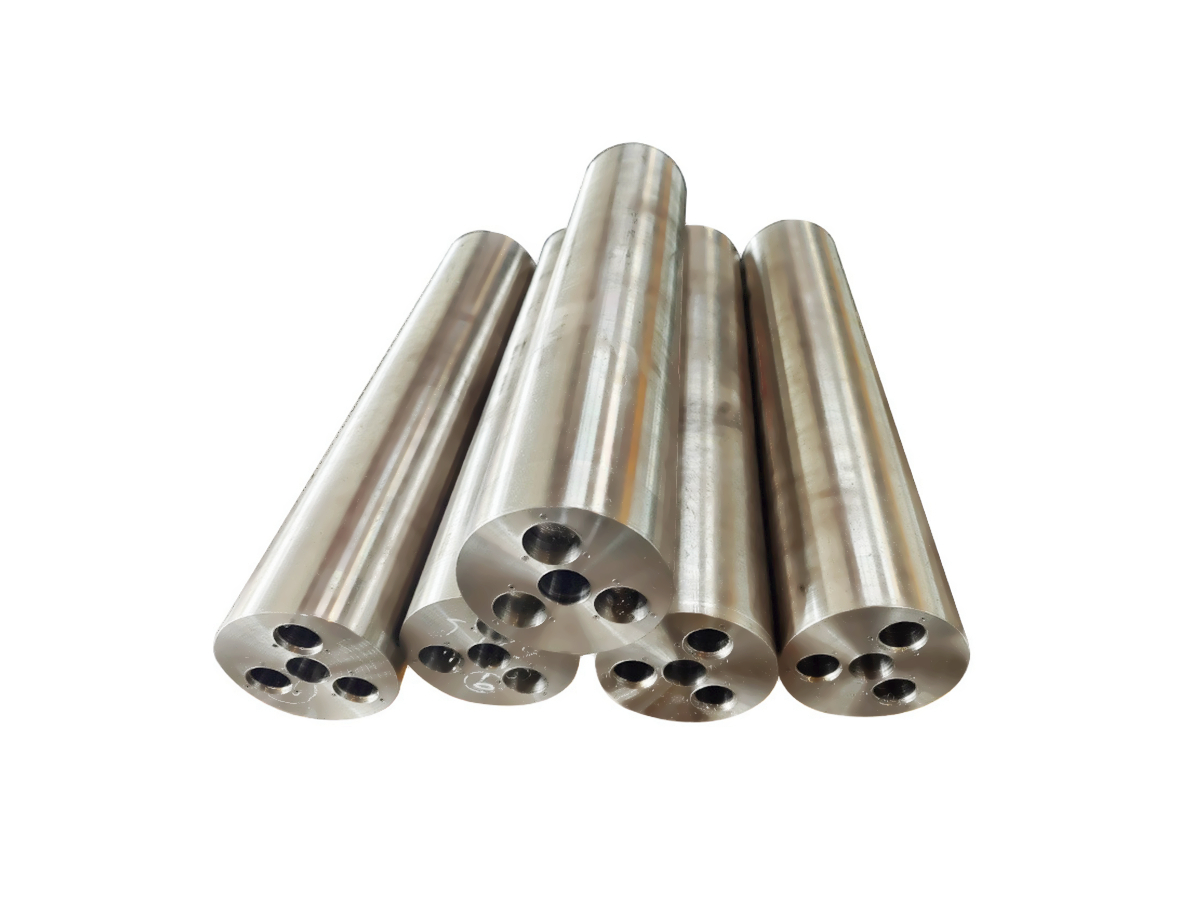Precision Deep Hole Drilling in Aerospace: Case Studies on Aluminum and Titanium Components
Introduction
In the Aerospace and Aviation industry, precision deep-hole drilling is essential for creating critical internal features in lightweight aluminum and titanium components. Aluminum alloys provide excellent machinability and weight reduction. In contrast, titanium alloys offer exceptional strength-to-weight ratios and corrosion resistance, ideal for high-performance aerospace applications such as structural airframe components, hydraulic manifolds, and landing gear systems.
Specialized CNC drilling services deliver the accuracy, hole straightness, and surface finish required for these demanding materials. Mastering deep-hole drilling enhances aerospace component reliability, structural integrity, and performance.
Aluminum and Titanium Materials
Material Performance Comparison
Alloy | Tensile Strength (MPa) | Yield Strength (MPa) | Density (g/cm³) | Typical Aerospace Uses | Advantage |
|---|---|---|---|---|---|
510-540 | 450-480 | 2.81 | Aircraft structural frames, wing spars | High strength-to-weight, good machinability | |
310-350 | 275-310 | 2.70 | Hydraulic manifolds, brackets | Excellent machinability, good corrosion resistance | |
900-1100 | 830-910 | 4.43 | Landing gear, engine mounts | Superior strength, fatigue resistance | |
1200-1300 | 1100-1200 | 4.65 | Structural fasteners, critical load-bearing parts | Exceptional strength, excellent toughness |
Material Selection Strategy
Selecting materials for aerospace deep hole drilling applications involves careful assessment of requirements:
Structural aircraft components and spars requiring high strength and machinability: Aluminum 7075 is optimal.
Hydraulic manifolds and brackets demand excellent machinability and corrosion resistance, so the Aluminum 6061-T6 is preferred.
High-strength landing gear and engine mounts exposed to significant loads: Ti-6Al-4V (TC4) offers robust mechanical performance.
Critical load-bearing fasteners and structural components: Ti-10V-2Fe-3Al (Grade 19) provides unmatched strength and toughness.
Deep Hole Drilling Processes
Process Performance Comparison
Drilling Technology | Hole Diameter Range (mm) | Depth-to-Diameter Ratio | Typical Aerospace Uses | Key Advantages |
|---|---|---|---|---|
2-50 | Up to 100:1 | Landing gear shafts, hydraulic manifolds | High precision, smooth internal finish | |
20-200 | Up to 400:1 | Large structural components, engine casings | Effective chip removal, hole straightness | |
1-50 | Up to 50:1 | Complex brackets, frames | Flexibility in complex geometry drilling | |
0.1-3 | Up to 100:1 | Precision cooling channels, jet engine blades | Ultra-precise small holes, minimal thermal stress |
Process Selection Strategy
Optimal deep hole drilling technology selection depends on specific aerospace component requirements:
Small diameter, high-precision deep holes: Gun Drilling ensures accuracy, straightness, and surface quality.
Large-diameter and very deep holes in structural elements: BTA Drilling is ideal for efficiency and accuracy.
Complex, multi-angle drilling on intricate parts: Multi-axis CNC Drilling provides excellent adaptability.
Micro-sized precision holes in high-value components: EDM Drilling delivers unmatched precision.
Surface Treatment
Surface Treatment Performance
Treatment Method | Corrosion Resistance | Wear Resistance | Temperature Stability (°C) | Typical Aerospace Uses | Key Features |
|---|---|---|---|---|---|
Excellent (≥500 hrs ASTM B117) | Moderate-High | Up to 400 | Aluminum frames, manifolds | Durable finish, enhanced corrosion resistance | |
Superior (≥800 hrs ASTM B117) | Moderate | Up to 350 | Titanium landing gear, critical fasteners | Improved fatigue performance, smooth finishes | |
Superior (≥1000 hrs ASTM B117) | High (HV2000-3000) | Up to 600 | Titanium components, wear surfaces | Exceptional hardness, extended durability | |
Excellent (≥600 hrs ASTM B117) | Moderate | Up to 350 | General aerospace components | Clean, corrosion-resistant surfaces |
Surface Treatment Selection
Surface treatments improve aerospace component functionality and durability:
Aluminum structural components requiring robust corrosion resistance: Anodizing provides durable protection.
Titanium landing gear and fatigue-sensitive parts: Electropolishing enhances surface quality and lifespan.
Wear-intensive titanium components: PVD Coating dramatically improves resistance to abrasion.
General aerospace components: Passivation ensures corrosion resistance and cleanliness.
Quality Control
Quality Control Procedures
Dimensional accuracy and hole straightness were verified using Coordinate Measuring Machines (CMM) and precision bore gauges.
Internal surface finish inspection via advanced profilometry and optical/video borescopes.
Mechanical testing (tensile strength, yield strength) according to ASTM and aerospace industry standards.
Non-destructive testing (NDT), such as ultrasonic (UT) and radiographic inspection (RT), is used for detecting internal defects.
Corrosion resistance validation with ASTM B117 salt spray testing.
Comprehensive documentation and traceability adhering to aerospace quality standards (AS9100, ISO 9001).
Industry Applications
Deep Hole Drilled Aluminum and Titanium Applications
Aircraft structural components, including wing spars and fuselage frames.
Precision hydraulic manifolds and valve bodies.
High-strength landing gear and engine mounts.
Critical aerospace fasteners and fittings.
Related FAQs:
Why is deep hole drilling critical for aerospace aluminum and titanium components?
Which deep hole drilling technology is best for large aerospace structures?
How does anodizing improve the durability of aluminum aerospace parts?
What advantages does gun drilling offer for titanium aerospace components?
What aerospace industry standards apply to deep hole drilled components?

